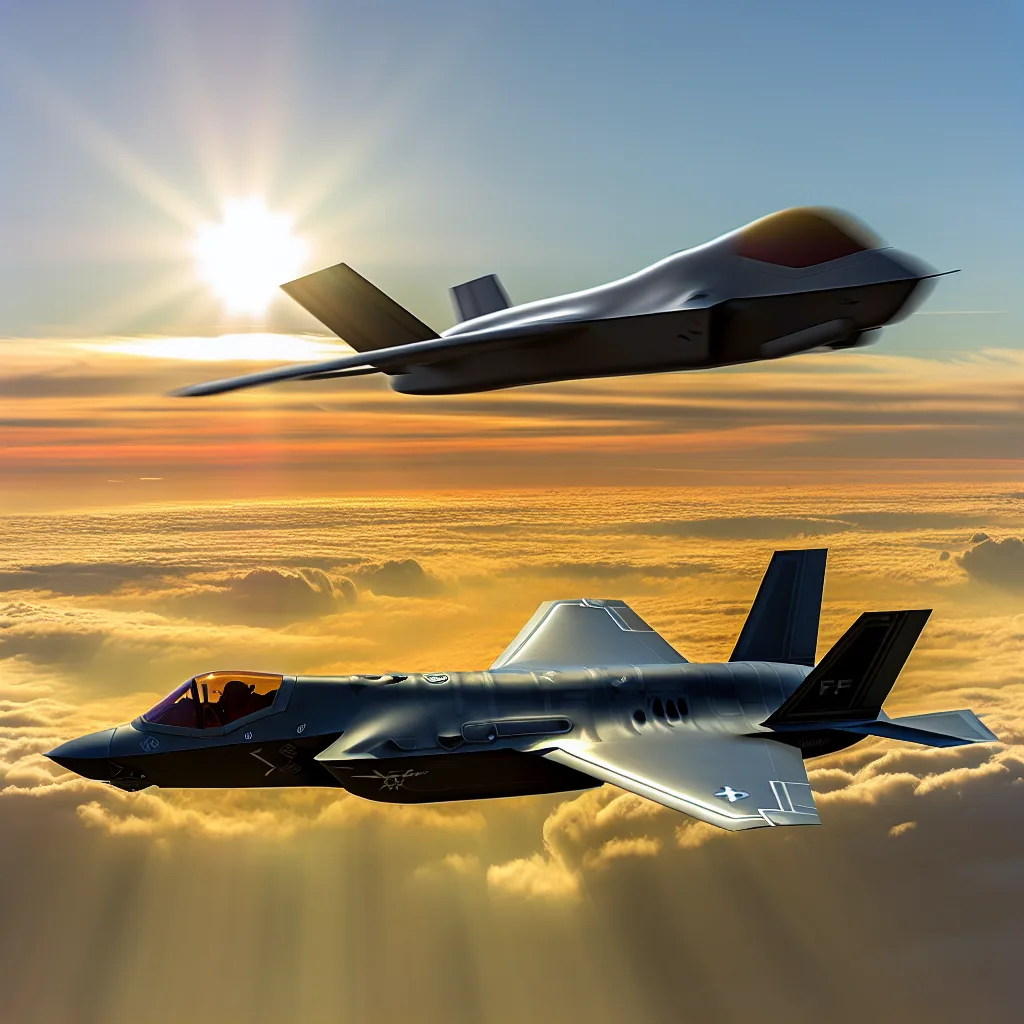It’s not science fiction anymore. The Air Force is testing jets flown by artificial intelligence, and it’s a bigger deal than you might think.
You’ve seen Top Gun, right? The intense dogfights, the skilled pilots, the human wingman camaraderie. Now, imagine that, but one of the pilots doesn’t have a pulse. It’s not science fiction anymore. At Eglin Air Force Base in Florida, the U.S. Air Force is actively testing a new kind of wingman: an AI fighter pilot. And it’s changing how we think about the future of air combat.
They’re flying alongside a drone called the XQ-58, which is piloted entirely by artificial intelligence. Major Trent McMullen, a fighter pilot involved in the tests, describes the experience of flying next to a machine. It’s a little different from flying with a human. “As humans, we fly very smooth, but it can roll and fly a little bit snappier than maybe a human pilot would,” he says. It might be a rougher ride, but then again, there’s no one on board to complain.
This AI isn’t just flying in straight lines. It’s learning how to fight. It’s being taught the fundamental “blocking and tackling of air combat” that human pilots learn at the beginning of their training. The goal is for these AI-piloted drones to one day fly alongside manned aircraft, taking on complex tasks and venturing into dangerous territory.
Why Do We Even Need an AI Fighter Pilot?
So, what’s the point? It turns out, this shift is born out of necessity. According to retired Air Force Lt. Gen. Clint Hinote, the nature of global military power is changing. In potential conflicts, the U.S. might be outnumbered. War games simulating these scenarios “don’t turn out very well,” Hinote admits. The Air Force is looking for a way to even the odds.
This is where the AI fighter pilot comes in. A machine has one massive advantage over a human: data processing. McMullen explains, “A human out in a complex air combat environment, there’s just no way to absorb all of it.” An AI, however, can process enormous amounts of information from countless sensors in real-time and make split-second tactical decisions.
Then there’s the human cost. An AI-piloted drone costs a fraction of a modern manned fighter jet—around $20 to $30 million each. More importantly, you don’t have to worry about bringing the pilot home. “You actually can take more risk,” says Hinote. This means the military can send these drones into high-threat environments without risking a human life. The Air Force is serious about this, with plans to have up to 1,000 of these aircraft in the future. You can learn more about the Air Force’s vision at the official Air Combat Command website.
The Big Question for the AI Fighter Pilot: Who Pulls the Trigger?
This all sounds incredibly advanced, but it brings up a huge ethical question. If an AI is flying a jet armed with weapons, will it be making life-or-death decisions on its own?
For now, the answer is a hard no. General Adrian Spain, head of Air Combat Command, is clear: “Absolutely not. The human who’s controlling the AI will make the life-and-death decisions.” The current model keeps a human firmly in the loop, giving the final command.
But the pressure is mounting. As technology advances, and if potential adversaries let their machines make autonomous decisions, the U.S. military might have to reconsider. There are real risks. We’ve all heard stories of AI getting things wrong or even “hallucinating.” General Spain acknowledges this, stating that an AI can be fooled or overwhelmed. Trust has to be earned, and it’s not there yet.
That’s what these tests are all about. Flight after flight, pilots are putting the AI through its paces, running simulations to build that crucial trust. It’s a slow, deliberate process of figuring out how humans and machines can work together effectively in the most demanding of environments.
When asked who he’d rather fly into combat with—a human or an AI wingman—Major McMullen gives a practical answer. “When we’re talking about the threats of tomorrow, if I can send an uncrewed asset into a high-risk environment, I’d rather do that than send a human pilot.” It’s a glimpse into a future where the bravest wingman might not be a person at all, but a sophisticated piece of code in a machine like the Kratos XQ-58A Valkyrie. The skies are about to get a lot more crowded, and a lot more interesting.
